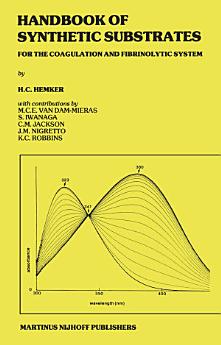Handbook of Synthetic Substrates
Dec 2012 · Springer Science & Business Media
Ebook
192
Pages
reportRatings and reviews aren’t verified Learn More
About this ebook
The need for a handbook on the use of synthetic substrates for assay of proteases of the coagulation and fibrinolytic systems became evident several years ago during the activities of the Subcommittee on Synthetic Substrates of the International Committee on Thrombosis and Haemo stasis (lCTH). Production of such a handbook, which was recommended during discussions of the ICTH at its meeting in London in 1979 was made possible by the generous efforts of Professor HC Hemker with the aid of several contributors with particular interests in the use of synthetic substrates in coagulation and fibrinolysis. As current Chairman and Secretary General of the ICTH we would like to express our sincere thanks to Professor Hemker for producing this handbook and look for ward to seeing the benefits of this tremendous effort reflected in the advancement of our understanding of thrombosis and hemostasis and the transfer of such knowledge into improved diagnosis and treatment of thrombotic and hemorrhagic disorders. Craig M Jackson Professor of Biological Chemistry Washington University School of Medicine, St. Louis, MO Chairman, ICTH Harold R Roberts Professor of Internal Medicine University of North Carolina, Chapel Hill, NC Secretary General, ICTH ix Foreword The advent of synthetic substrates for the study of blood coagulation and fibrinolysis was a significant step forward in the investigation of these systems. Both basic research and clinical laboratory investigations can profit from these advanced tools.
Rate this ebook
Tell us what you think.
Reading information
Smartphones and tablets
Install the Google Play Books app for Android and iPad/iPhone. It syncs automatically with your account and allows you to read online or offline wherever you are.
Laptops and computers
You can listen to audiobooks purchased on Google Play using your computer's web browser.
eReaders and other devices
To read on e-ink devices like Kobo eReaders, you'll need to download a file and transfer it to your device. Follow the detailed Help Center instructions to transfer the files to supported eReaders.





